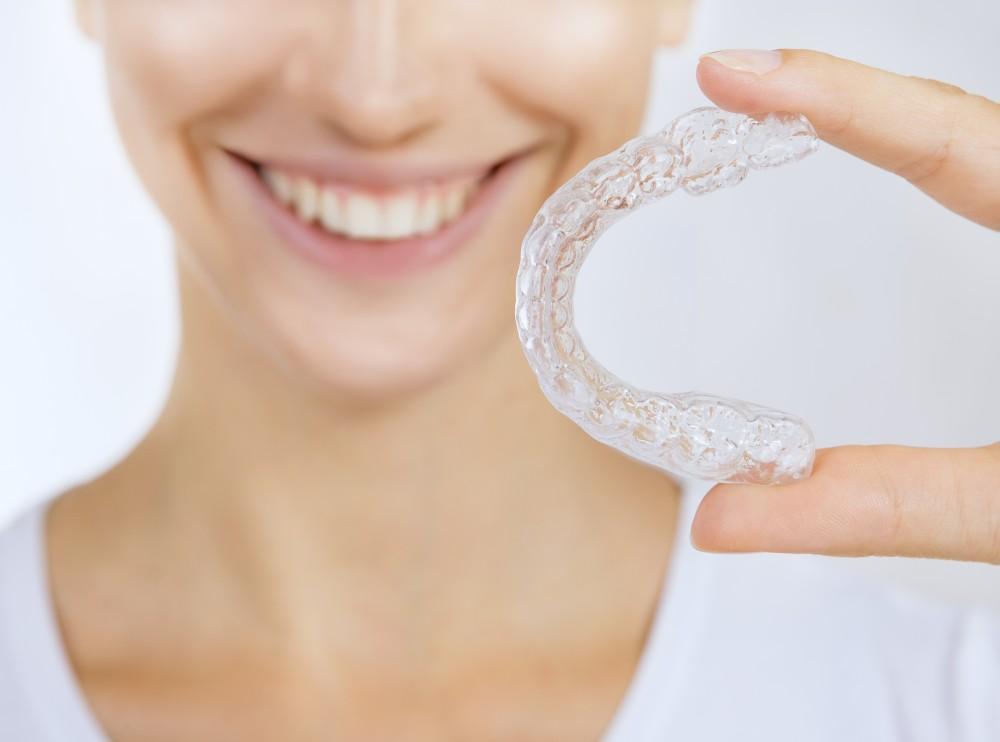Key Takeaways:
- Invisalign is a discreet and effective alternative to traditional braces.
- Invisalign uses clear aligners made from a smooth plastic material that are virtually invisible when worn.
- The aligners are removable, allowing for easy eating and oral hygiene maintenance.
- Invisalign aligners are more comfortable and convenient compared to braces.
- Maintaining good oral hygiene is easier with Invisalign.
- Invisalign is suitable for a wide range of orthodontic issues, but not for complex cases.
- Consultation with an Invisalign-trained orthodontist is necessary to determine suitability for treatment.
- Customized treatment plans are created for each patient, with a series of aligners designed to gradually shift teeth into desired positions.
- The treatment duration varies depending on individual needs, usually taking 6 to 18 months.
- Using retainers after treatment is important to maintain the results achieved with Invisalign.
- Straightening Teeth Without Braces: Introducing Invisalign
A Revolutionary Approach
When it comes to achieving a straight and beautiful smile, many people are hesitant about traditional braces. The thought of metal wires and brackets can be daunting and can affect one’s confidence. However, with advancements in orthodontic technology, there is now a discreet and effective alternative called Invisalign.
How Does Invisalign Work?
Invisalign uses a revolutionary approach to straighten teeth without the need for traditional braces. Instead of wires and brackets, it utilizes a series of clear aligners that are custom-made to fit snugly over your teeth. These aligners are made from a smooth and comfortable plastic material and are virtually invisible when worn.
The treatment process begins with a consultation with an Invisalign-trained orthodontist who will assess your teeth and determine if you are a suitable candidate for Invisalign. If deemed appropriate, the orthodontist will take digital impressions of your teeth, which will be used to create a 3D model of your desired tooth movements.
Based on this model, a series of aligners will be custom-made for you. Each set of aligners is designed to gradually shift your teeth into their desired positions. You will wear each set of aligners for about two weeks before moving on to the next set.
Throughout the treatment process, you will visit your orthodontist periodically to monitor your progress and receive new sets of aligners. With each new set, you will notice your teeth gradually straightening, ultimately leading to your desired smile.
Why Choose Invisalign over Traditional Braces?
Invisalign offers several advantages over traditional braces, making it a popular choice among individuals seeking orthodontic treatment. One of the main reasons people prefer Invisalign is the aesthetic aspect. The clear aligners are virtually invisible when worn, allowing you to straighten your teeth discreetly and without drawing attention to your treatment.
Additionally, the aligners are removable, meaning you can take them out when eating or brushing your teeth. This eliminates the dietary restrictions associated with traditional braces and makes it easier to maintain good oral hygiene throughout your treatment.
Furthermore, Invisalign aligners are more comfortable than braces as they are made from a smooth plastic material. There are no wires or brackets to cause discomfort or irritation in your mouth. This makes Invisalign a more comfortable and convenient option for individuals with busy lifestyles.
- Benefits and Advantages of Invisalign
Invisible and Removable Aligners
The most notable benefit of Invisalign is its invisibility. The clear aligners are virtually invisible when worn, making it a discreet option for individuals who may feel self-conscious about traditional braces. Whether you are a teenager or an adult, you can confidently go about your daily activities without feeling insecure about your smile.
In addition to being invisible, Invisalign aligners are also removable. This means you can easily take them out for special occasions or when eating your favorite foods. Unlike with braces, there are no dietary restrictions with Invisalign. You can continue to enjoy all your favorite foods without worrying about damaging your aligners or getting food stuck in them.
Comfortable and Convenient Treatment
Another advantage of Invisalign is its comfort. The aligners are made from a smooth plastic material that is gentle on your gums and mouth. There are no wires or brackets to cause irritation or discomfort. You can wear your aligners for the recommended 22 hours a day without experiencing any significant discomfort.
Additionally, Invisalign offers convenience. Unlike braces, which require frequent visits to the orthodontist for adjustments, Invisalign aligners can be changed at home. You will visit your orthodontist periodically to monitor your progress, but most of the treatment can be done on your own time.
Improved Oral Hygiene
Maintaining good oral hygiene is easier with Invisalign compared to braces. Since the aligners are removable, you can easily brush and floss your teeth without any obstructions. This reduces the risk of plaque buildup, tooth decay, and gum disease during your orthodontic treatment.
Traditional braces can make it challenging to clean your teeth properly, as the brackets and wires can trap food particles and make brushing and flossing difficult. Invisalign eliminates this problem, allowing you to maintain optimal oral hygiene throughout your treatment.
- Is Invisalign Right for You?
Candidates for Invisalign
Invisalign is suitable for a wide range of orthodontic issues, including crowded teeth, gaps between teeth, overbite, underbite, and crossbite. However, it is important to note that not everyone is a candidate for Invisalign. Complex orthodontic cases may require traditional braces or other orthodontic treatments.
During your consultation with an Invisalign-trained orthodontist, they will evaluate your teeth and bite to determine if Invisalign is the right treatment option for you. Factors such as the severity of your orthodontic issues, your commitment to wearing the aligners as directed, and your overall oral health will be taken into consideration.
Complex Orthodontic Issues
While Invisalign is effective for many orthodontic issues, there are instances where traditional braces may be necessary. If you have severe malocclusions, jaw misalignments, or other complex orthodontic issues, your orthodontist may recommend braces or a combination of braces and other orthodontic treatments as the best course of action.
It is crucial to consult with an experienced orthodontist who can assess your specific case and provide personalized recommendations. They will consider the complexity of your orthodontic issues and determine the most effective treatment approach for achieving optimal results.
Consultation and Assessment Process
If you are considering Invisalign, the first step is to schedule a consultation with an Invisalign-trained orthodontist. During this consultation, the orthodontist will examine your teeth, take x-rays and photographs, and discuss your treatment goals and expectations.
Based on the assessment, the orthodontist will determine if you are a suitable candidate for Invisalign. They will then create a customized treatment plan that outlines the predicted tooth movements and estimated treatment duration. This plan will give you a clear understanding of what to expect throughout your Invisalign journey.
- Achieving a Beautiful Smile with Invisalign
Customized Treatment Plans
One of the key advantages of Invisalign is the ability to create customized treatment plans for each patient. Your orthodontist will utilize advanced computer technology to map out the precise movements your teeth need to make to achieve your desired smile.
Based on this digital treatment plan, a series of aligners will be created specifically for you. Each set of aligners is designed to gradually move your teeth into their ideal positions. Your orthodontist will monitor your progress and make any necessary adjustments along the way to ensure you achieve optimal results.
Expected Treatment Duration
The length of your Invisalign treatment will depend on the complexity of your orthodontic issues. On average, treatment with Invisalign can take anywhere from 6 to 18 months. However, some cases may require a shorter or longer treatment duration.
During your consultation, your orthodontist will provide you with an estimated treatment timeline based on your individual needs. It is important to follow your orthodontist’s instructions and wear your aligners as directed to ensure the most efficient and effective treatment outcome.
Maintaining Results after Treatment
After completing your Invisalign treatment, it is crucial to maintain the results you have achieved. Your orthodontist may recommend the use of retainers to prevent your teeth from shifting back to their original positions.
Retainers are custom-made to fit your teeth and are typically worn at night. They help maintain the alignment of your teeth and ensure long-lasting results. It is important to wear your retainers as directed by your orthodontist to preserve the beautiful smile you have worked so hard to achieve.
In conclusion, Invisalign offers a revolutionary approach to straightening teeth without the need for traditional braces. With its invisible and removable aligners, comfortable treatment process, and improved oral hygiene, Invisalign provides numerous benefits and advantages over traditional braces.
While Invisalign may not be suitable for everyone, it is a highly effective treatment option for a wide range of orthodontic issues. By consulting with an experienced orthodontist and following a personalized treatment plan, you can achieve a beautiful smile with Invisalign.
Remember, the journey to a straighter smile requires commitment and consistency. With Invisalign, you have the opportunity to transform your smile discreetly and confidently. Embrace the magic of Invisalign and unlock the potential of your smile.
FAQ
Question: What is Invisalign? – Invisalign is a discreet and effective alternative to traditional braces. It uses clear aligners made from a smooth plastic material that are virtually invisible when worn.
Question: How does Invisalign work? – Invisalign uses a series of custom-made clear aligners to gradually shift teeth into their desired positions. Each set of aligners is worn for about two weeks before moving on to the next set.
Question: Why choose Invisalign over traditional braces? – Invisalign offers several advantages over traditional braces, such as being virtually invisible, removable, more comfortable, and convenient for individuals with busy lifestyles.
Question: What are the benefits and advantages of Invisalign? – Some benefits of Invisalign include invisible and removable aligners, comfortable treatment, and improved oral hygiene compared to braces.
Question: Is Invisalign right for everyone? – Invisalign is suitable for a wide range of orthodontic issues, but not for complex cases. It is important to consult with an Invisalign-trained orthodontist to determine if Invisalign is the right treatment option for you.
Question: How long does Invisalign treatment take? – The treatment duration varies depending on individual needs, but it usually takes 6 to 18 months. Your orthodontist will provide you with an estimated treatment timeline based on your specific case.
Question: What should I do after completing Invisalign treatment? – It is important to maintain the results achieved with Invisalign by using retainers as recommended by your orthodontist. Retainers help prevent teeth from shifting back to their original positions.
Question: How do I start Invisalign treatment? – The first step is to schedule a consultation with an Invisalign-trained orthodontist who will examine your teeth, discuss your treatment goals, and determine if you are a suitable candidate for Invisalign.
Useful Resources
- Invisalign Official Website
- American Association of Orthodontists
- American Dental Association
- Colgate Oral Care
- WebMD
- Mouth Healthy by the American Dental Association
- Spear Education
- National Center for Biotechnology Information (NCBI)


